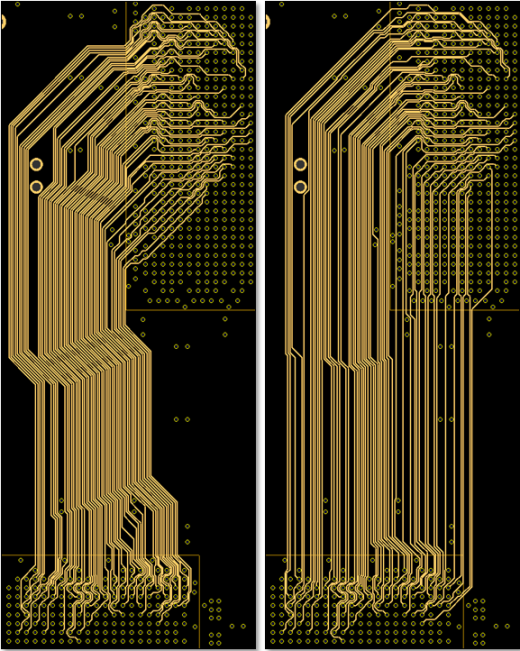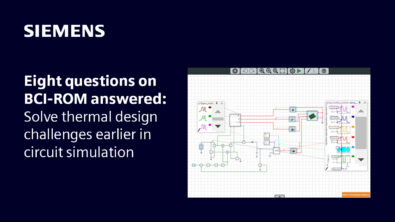To Autoroute or Not to Autoroute: Part 2
This is the second post in a routing series. View the first one here.
Last time I introduced a powerful new automated routing technology called sketch routing. This time I will discuss how sketch routing is different from autorouting and how easy is to use.
How is sketch routing different from autorouting?
Due to the simplicity of the Sketch Router methodology, it can be applied to a wide range of conditions. It is easy to use, setup (there really is no set up required!), and control. It has a level of unsurpassed quality that mirrors manual routing results and provides an automated method of routing small or large groups of netlines.
The user controls:
- Netlines to route
- The routing path
- Layers to route on
- Via patterns
- Style of routing (packed versus unpacked)
Selecting Netlines to Route
There are several different methods of interaction methodology to start and control sketch routing. Try each one to determine which methods best suits the specific task. I’ll discuss a few of those methods here.
- Draw a sketch path and select the Sketch Route command: the netlines to be routed will be automatically selected based on proximity of the start and end points of the sketch path.
- Select netlines, draw the sketch path and select the Sketch Route command: as you would expect, only the selected netlines will be routed.
- Select netlines and select the Sketch Route command: in this case because you never drew a sketch path, the routing algorithms will decide the best path for the routing.
Routing Path
In the first of this blog series, I illustrated the method of creating a route or sketch path. The sketch path is simply a free-form path that you draw on the screen; it is used to define where the routing needs to be placed.
Routing Layer and Via Patterns
While drawing the sketch path, you may change layers and define the preferred via pattern to be used. A graphic symbol, which represents the different via patterns, is displayed as you toggle through the options before selecting the optimal pattern.
There are four different styles, two different directions, and eight possible rotations that provide a total of 34 different patterns to choose from; you’ll always be able to find a combination that is just right for your routing situation.
Using the packed style of routing will pack the routes together, closely following the center of the sketch path and minimum clearance rules. Some meandering and additional segments will result as the algorithms optimize spacing and use of the available real estate.
Using the unpacked style, routes are not packed together and the routing is glossed to minimize the number of segments; this style takes the most direct connection for each net.
Summary
The methodology for the sketch routing is unique and very different from existing interactive routing technology. Once you understand the principles and options as well as the conditions which allow it to be effective, sketch routing will become your preferred method for most interactive routing tasks.
In the last of my posts on this topic I will discuss performance and productivity.
Here’s a question I posed last time – do you use autorouters or do you route your designs manually? What do you believe are the pros and cons of autorouting? Let me know, I’d like to hear from you.
In the meantime why not take a look at the sketch router in action on PADS.com?
Comments
Leave a Reply
You must be logged in to post a comment.





Thanks for sharing the info.
Hi Steve, This is a very admirable attempt to bridge what you very correctly describe as a vexing decision. I have very occasionally used an autorouter, on what I felt were very non-critical layouts. But the vast majority of projects I do layout on, I manually route. Well over 90%. The reasons you cite are all very good and applicable for manual routing. I have a couple more. I am a consulting EE working for a wide variety of companies, each often with a standard design tool they sometimes insist upon, or at least have a strong preference that I use. Thus I usually have to learn the basics very quickly, and mastery of the autorouter is something I forgo, just to minimize the learning curve. I am primarily an analog designer who is extremely fussy about layout. Much more so than any autorouter I’ve tried can deliver. Most designs require or highly desire the smallest possible board size, making routing tight, and more difficult for an autorouter. Finally, most of my designs have been on fairly small boards, with an acceptably small number of traces, so that the time for manual routing is not prohibitive. Thanks for the articles. Very good topic. – Doug
Doug, I do agree that the type, technology used & size of board are all factors that will influence your decision to manually route the design rather than use an automated approach.
I’ve already found that I’m getting lazy & use sketch routing whenever I need to route more that a single trace at a time. 🙂
Thanks for sharing your points of view here.
Steve